RBS 2012 Annual Report Download - page 398
Download and view the complete annual report
Please find page 398 of the 2012 RBS annual report below. You can navigate through the pages in the report by either clicking on the pages listed below, or by using the keyword search tool below to find specific information within the annual report.-
 1
1 -
 2
2 -
 3
3 -
 4
4 -
 5
5 -
 6
6 -
 7
7 -
 8
8 -
 9
9 -
 10
10 -
 11
11 -
 12
12 -
 13
13 -
 14
14 -
 15
15 -
 16
16 -
 17
17 -
 18
18 -
 19
19 -
 20
20 -
 21
21 -
 22
22 -
 23
23 -
 24
24 -
 25
25 -
 26
26 -
 27
27 -
 28
28 -
 29
29 -
 30
30 -
 31
31 -
 32
32 -
 33
33 -
 34
34 -
 35
35 -
 36
36 -
 37
37 -
 38
38 -
 39
39 -
 40
40 -
 41
41 -
 42
42 -
 43
43 -
 44
44 -
 45
45 -
 46
46 -
 47
47 -
 48
48 -
 49
49 -
 50
50 -
 51
51 -
 52
52 -
 53
53 -
 54
54 -
 55
55 -
 56
56 -
 57
57 -
 58
58 -
 59
59 -
 60
60 -
 61
61 -
 62
62 -
 63
63 -
 64
64 -
 65
65 -
 66
66 -
 67
67 -
 68
68 -
 69
69 -
 70
70 -
 71
71 -
 72
72 -
 73
73 -
 74
74 -
 75
75 -
 76
76 -
 77
77 -
 78
78 -
 79
79 -
 80
80 -
 81
81 -
 82
82 -
 83
83 -
 84
84 -
 85
85 -
 86
86 -
 87
87 -
 88
88 -
 89
89 -
 90
90 -
 91
91 -
 92
92 -
 93
93 -
 94
94 -
 95
95 -
 96
96 -
 97
97 -
 98
98 -
 99
99 -
 100
100 -
 101
101 -
 102
102 -
 103
103 -
 104
104 -
 105
105 -
 106
106 -
 107
107 -
 108
108 -
 109
109 -
 110
110 -
 111
111 -
 112
112 -
 113
113 -
 114
114 -
 115
115 -
 116
116 -
 117
117 -
 118
118 -
 119
119 -
 120
120 -
 121
121 -
 122
122 -
 123
123 -
 124
124 -
 125
125 -
 126
126 -
 127
127 -
 128
128 -
 129
129 -
 130
130 -
 131
131 -
 132
132 -
 133
133 -
 134
134 -
 135
135 -
 136
136 -
 137
137 -
 138
138 -
 139
139 -
 140
140 -
 141
141 -
 142
142 -
 143
143 -
 144
144 -
 145
145 -
 146
146 -
 147
147 -
 148
148 -
 149
149 -
 150
150 -
 151
151 -
 152
152 -
 153
153 -
 154
154 -
 155
155 -
 156
156 -
 157
157 -
 158
158 -
 159
159 -
 160
160 -
 161
161 -
 162
162 -
 163
163 -
 164
164 -
 165
165 -
 166
166 -
 167
167 -
 168
168 -
 169
169 -
 170
170 -
 171
171 -
 172
172 -
 173
173 -
 174
174 -
 175
175 -
 176
176 -
 177
177 -
 178
178 -
 179
179 -
 180
180 -
 181
181 -
 182
182 -
 183
183 -
 184
184 -
 185
185 -
 186
186 -
 187
187 -
 188
188 -
 189
189 -
 190
190 -
 191
191 -
 192
192 -
 193
193 -
 194
194 -
 195
195 -
 196
196 -
 197
197 -
 198
198 -
 199
199 -
 200
200 -
 201
201 -
 202
202 -
 203
203 -
 204
204 -
 205
205 -
 206
206 -
 207
207 -
 208
208 -
 209
209 -
 210
210 -
 211
211 -
 212
212 -
 213
213 -
 214
214 -
 215
215 -
 216
216 -
 217
217 -
 218
218 -
 219
219 -
 220
220 -
 221
221 -
 222
222 -
 223
223 -
 224
224 -
 225
225 -
 226
226 -
 227
227 -
 228
228 -
 229
229 -
 230
230 -
 231
231 -
 232
232 -
 233
233 -
 234
234 -
 235
235 -
 236
236 -
 237
237 -
 238
238 -
 239
239 -
 240
240 -
 241
241 -
 242
242 -
 243
243 -
 244
244 -
 245
245 -
 246
246 -
 247
247 -
 248
248 -
 249
249 -
 250
250 -
 251
251 -
 252
252 -
 253
253 -
 254
254 -
 255
255 -
 256
256 -
 257
257 -
 258
258 -
 259
259 -
 260
260 -
 261
261 -
 262
262 -
 263
263 -
 264
264 -
 265
265 -
 266
266 -
 267
267 -
 268
268 -
 269
269 -
 270
270 -
 271
271 -
 272
272 -
 273
273 -
 274
274 -
 275
275 -
 276
276 -
 277
277 -
 278
278 -
 279
279 -
 280
280 -
 281
281 -
 282
282 -
 283
283 -
 284
284 -
 285
285 -
 286
286 -
 287
287 -
 288
288 -
 289
289 -
 290
290 -
 291
291 -
 292
292 -
 293
293 -
 294
294 -
 295
295 -
 296
296 -
 297
297 -
 298
298 -
 299
299 -
 300
300 -
 301
301 -
 302
302 -
 303
303 -
 304
304 -
 305
305 -
 306
306 -
 307
307 -
 308
308 -
 309
309 -
 310
310 -
 311
311 -
 312
312 -
 313
313 -
 314
314 -
 315
315 -
 316
316 -
 317
317 -
 318
318 -
 319
319 -
 320
320 -
 321
321 -
 322
322 -
 323
323 -
 324
324 -
 325
325 -
 326
326 -
 327
327 -
 328
328 -
 329
329 -
 330
330 -
 331
331 -
 332
332 -
 333
333 -
 334
334 -
 335
335 -
 336
336 -
 337
337 -
 338
338 -
 339
339 -
 340
340 -
 341
341 -
 342
342 -
 343
343 -
 344
344 -
 345
345 -
 346
346 -
 347
347 -
 348
348 -
 349
349 -
 350
350 -
 351
351 -
 352
352 -
 353
353 -
 354
354 -
 355
355 -
 356
356 -
 357
357 -
 358
358 -
 359
359 -
 360
360 -
 361
361 -
 362
362 -
 363
363 -
 364
364 -
 365
365 -
 366
366 -
 367
367 -
 368
368 -
 369
369 -
 370
370 -
 371
371 -
 372
372 -
 373
373 -
 374
374 -
 375
375 -
 376
376 -
 377
377 -
 378
378 -
 379
379 -
 380
380 -
 381
381 -
 382
382 -
 383
383 -
 384
384 -
 385
385 -
 386
386 -
 387
387 -
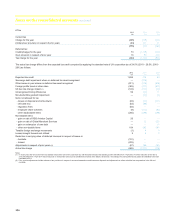 388
388 -
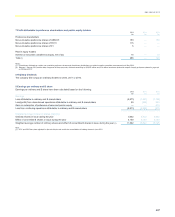 389
389 -
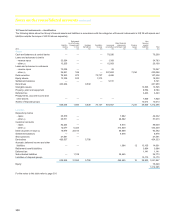 390
390 -
 391
391 -
 392
392 -
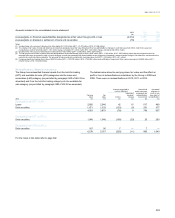 393
393 -
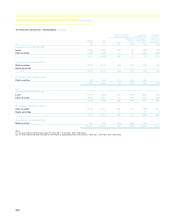 394
394 -
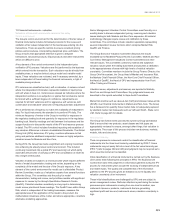 395
395 -
 396
396 -
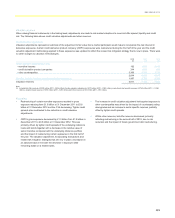 397
397 -
 398
398 -
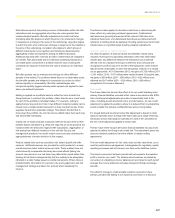 399
399 -
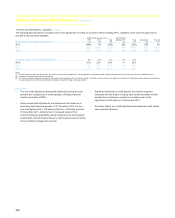 400
400 -
 401
401 -
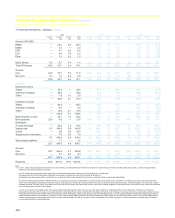 402
402 -
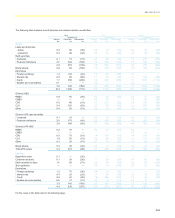 403
403 -
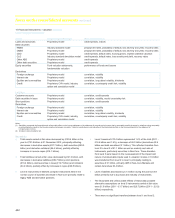 404
404 -
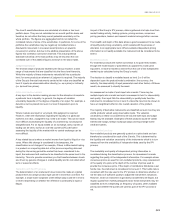 405
405 -
 406
406 -
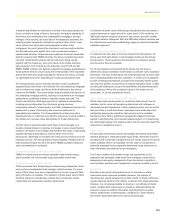 407
407 -
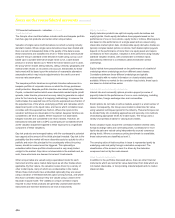 408
408 -
 409
409 -
 410
410 -
 411
411 -
 412
412 -
 413
413 -
 414
414 -
 415
415 -
 416
416 -
 417
417 -
 418
418 -
 419
419 -
 420
420 -
 421
421 -
 422
422 -
 423
423 -
 424
424 -
 425
425 -
 426
426 -
 427
427 -
 428
428 -
 429
429 -
 430
430 -
 431
431 -
 432
432 -
 433
433 -
 434
434 -
 435
435 -
 436
436 -
 437
437 -
 438
438 -
 439
439 -
 440
440 -
 441
441 -
 442
442 -
 443
443 -
 444
444 -
 445
445 -
 446
446 -
 447
447 -
 448
448 -
 449
449 -
 450
450 -
 451
451 -
 452
452 -
 453
453 -
 454
454 -
 455
455 -
 456
456 -
 457
457 -
 458
458 -
 459
459 -
 460
460 -
 461
461 -
 462
462 -
 463
463 -
 464
464 -
 465
465 -
 466
466 -
 467
467 -
 468
468 -
 469
469 -
 470
470 -
 471
471 -
 472
472 -
 473
473 -
 474
474 -
 475
475 -
 476
476 -
 477
477 -
 478
478 -
 479
479 -
 480
480 -
 481
481 -
 482
482 -
 483
483 -
 484
484 -
 485
485 -
 486
486 -
 487
487 -
 488
488 -
 489
489 -
 490
490 -
 491
491 -
 492
492 -
 493
493 -
 494
494 -
 495
495 -
 496
496 -
 497
497 -
 498
498 -
 499
499 -
 500
500 -
 501
501 -
 502
502 -
 503
503 -
 504
504 -
 505
505 -
 506
506 -
 507
507 -
 508
508 -
 509
509 -
 510
510 -
 511
511 -
 512
512 -
 513
513 -
 514
514 -
 515
515 -
 516
516 -
 517
517 -
 518
518 -
 519
519 -
 520
520 -
 521
521 -
 522
522 -
 523
523 -
 524
524 -
 525
525 -
 526
526 -
 527
527 -
 528
528 -
 529
529 -
 530
530 -
 531
531 -
 532
532 -
 533
533 -
 534
534 -
 535
535 -
 536
536 -
 537
537 -
 538
538 -
 539
539 -
 540
540 -
 541
541 -
 542
542 -
 543
543
 |
 |

396
Notes on the consolidated accounts continued
11 Financial instruments - valuation continued
Monoline insurers
The Group has purchased protection from monoline insurers
(‘monolines’), mainly against specific asset-backed securities. Monolines
specialise in providing credit protection against the principal and interest
cash flows due to the holders of debt instruments in the event of default
by the debt instrument counterparty. This protection is typically held in the
form of derivatives such as credit default swaps (CDSs) referencing
underlying exposures held directly or synthetically by the Group.
The gross mark-to-market of the monoline protection depends on the
value of the instruments against which protection has been bought. A
positive fair value, or a valuation gain, in the protection is recognised if
the fair value of the instrument it references decreases. For the majority
of trades the gross mark-to-market of the monoline protection is
determined directly from the fair value price of the underlying reference
instrument. However, for the remainder of the trades the gross mark-to-
market is determined using industry standard models.
The methodology employed to calculate the monoline CVA uses market
implied probability of defaults and internally assessed recovery levels to
determine the level of expected loss on monoline exposures of different
maturities. The probability of default is calculated with reference to
market observable credit spreads and recovery levels. CVA is calculated
at a trade level by applying the expected loss corresponding to each
trade’s expected maturity, to the gross mark-to-market of the monoline
protection. The expected maturity of each trade reflects the scheduled
notional amortisation of the underlying reference instruments and
whether payments due from the monoline are received at the point of
default or over the life of the underlying reference instruments.
Credit derivative product companies (CDPC)
A CDPC is a company that sells protection on credit derivatives. CDPCs
are similar to monoline insurers, however they are not regulated as
insurers.
The Group has purchased credit protection from CDPCs through
tranched and single name credit derivatives. The Group's exposure to
CDPCs is predominantly due to tranched credit derivatives (“tranches”). A
tranche references a portfolio of loans and bonds and provides protection
against total portfolio default losses exceeding a certain percentage of
the portfolio notional (the attachment point) up to another percentage (the
detachment point).
The Group has predominantly traded senior tranches with CDPCs, the
average attachment and detachment points are 16% and 49%
respectively (2011 - 13% and 47%; 2010 - 13% and 49%), and the
majority of the loans and bonds in the reference portfolios are investment
grade.
The gross mark-to-market of the CDPC protection is determined using
industry standard models. Trade restructurings during the second half of
2012 provided market evidence of the fair value of certain CDPC
exposures resulting in valuation adjustments of £279 million at
31 December 2012. These adjustments are also included in the table
above. For trades facing other CDPCs, the methodology employed to
calculate the CDPC CVA is different to that outlined above for monolines,
as there are no market observable credit spreads and recovery levels for
these entities. The level of expected loss on these CDPC exposures is
estimated with reference to risk mitigation strategies.
Other counterparties
The CVA for all other counterparties is calculated on a portfolio basis
reflecting an estimate of the amount a third party would charge to assume
the credit risk.
Where exposure exists to a counterparty that is considered to be close to
default, the CVA is calculated by applying expected losses to the current
level of exposure. Otherwise, expected losses are applied to estimated
potential future exposures which are modelled to reflect the volatility of
the market factors which drive the exposures and the correlation between
those factors. Potential future exposures arising from vanilla products
(including interest rate and foreign exchange derivatives) are modelled
jointly using the Group's core counterparty risk systems. The majority of
the Group's CVA held in relation to other counterparties arises on these
vanilla products together with exposures to counterparties which are
considered to be close to default. The exposures arising from all other
product types are modelled and assessed individually. The potential
future exposure to each counterparty is the aggregate of the exposures
arising on the underlying product types.
The correlation between exposure and counterparty risk is also
incorporated within the CVA calculation where this risk is considered
significant. The risk primarily arises on credit derivative trades where the
default risk of the referenced entity is correlated with the counterparty
risk. The risk also arises on trades with emerging market counterparties
where the gross mark-to-market value of the trade, and
therefore the counterparty exposure, increases as the strength of the
local currency declines.
Collateral held under a credit support agreement is factored into the CVA
calculation. In such cases where the Group holds collateral against
counterparty exposures, CVA is held to the extent that residual risk
remains.
Bid-offer, liquidity and other reserves
Fair value positions are adjusted to bid or offer levels, by marking
individual cash based positions directly to bid or offer or by taking bid-
offer reserves calculated on a portfolio basis for derivatives exposures.
The bid-offer approach is based on current market spreads and standard
market bucketing of risk.
